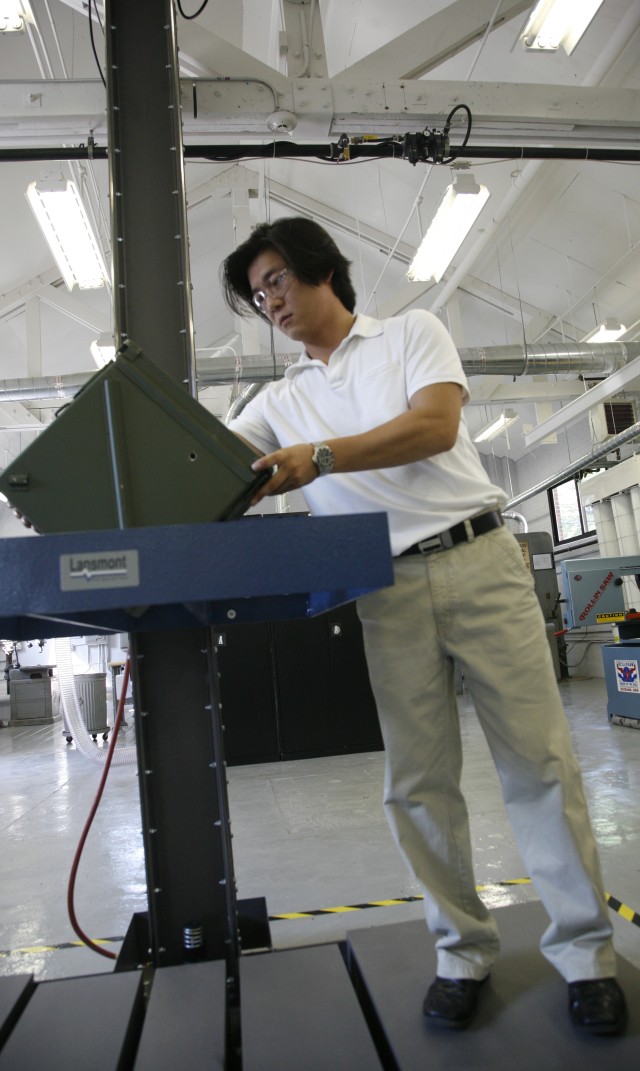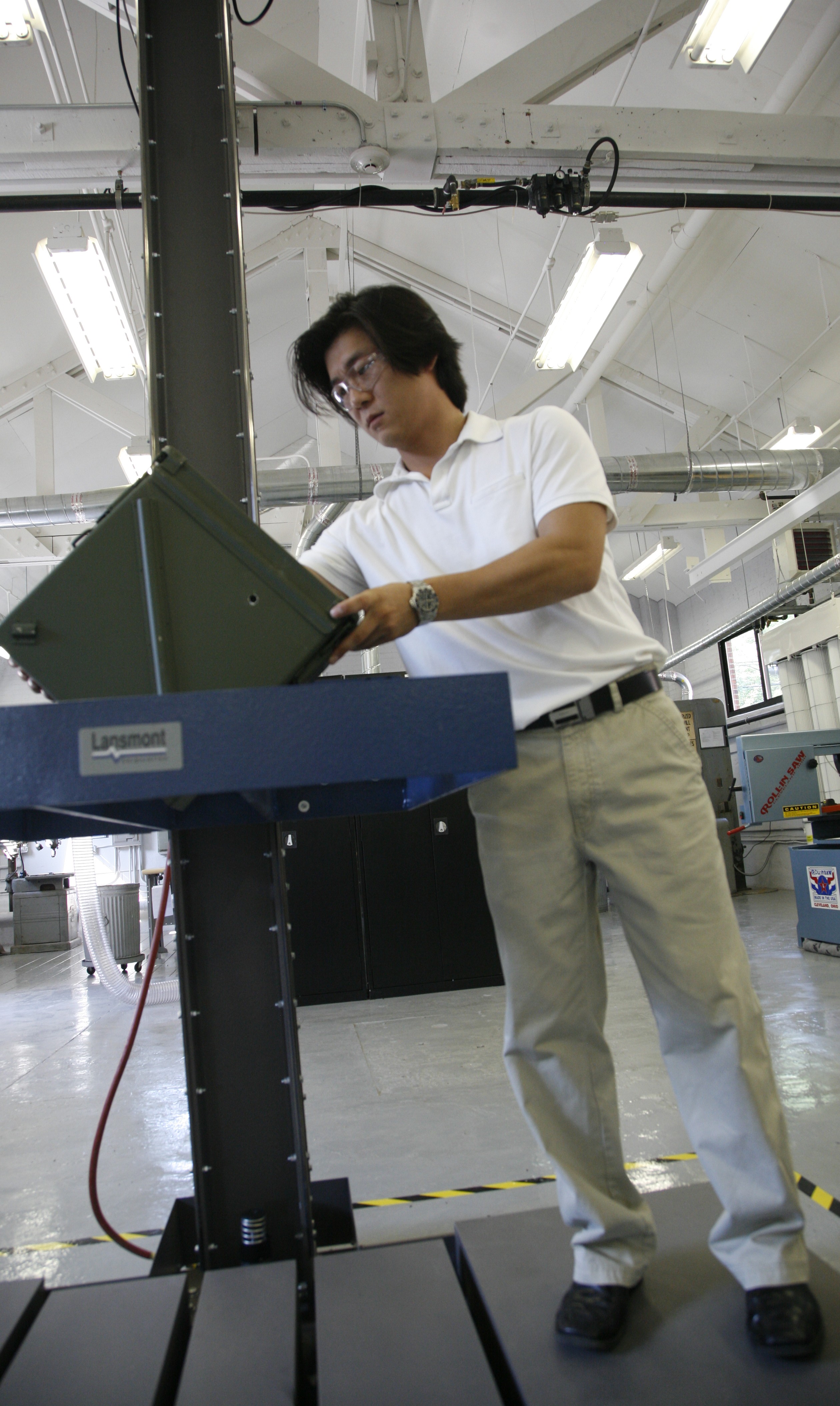PICATINNY ARSENAL, N.J. - They've been subjected to intense pressure. They've been exposed to extreme heat and cold and are still expected to perform up to Army standards. They've been bounced around and dropped to the ground, all for the sake of the mission.
While this may sound like a scene from a war zone, it actually describes the rigorous packaging testing at the Armament Research, Development and Engineering Center's newly-renovated Packaging Design and Prototype Laboratory.
The renovated lab, known to Picatinny employees as building 403, was unveiled during a ribbon-cutting ceremony here June 5.
"The packaging designed in the lab ensures the long-term preservation and protection of products that are ultimately shipped to the warfighters," explained Mike Ivankoe, supervisory packaging engineer. "The new facility will help Picatinny engineers develop effective and efficient packaging solutions for munitions and ammunition sent to our service members."
This was the first major renovation to the pre-World War II building, although small renovations and improvements had been completed throughout its history, Ivankoe said.
The lab, which will continue to be used as a United Nations performance orientated packaging qualification test facility, can also be used as a prototype and developmental test lab for new packaging designs.
Products shipped to service members must be able to withstand long-term storage, severe temperature conditions and also high-impact shock.
To create this type of durability, Ivankoe said the new lab features updated packaging-specific testing equipment such as a drop tester, which replicates munitions falling from a truck or railcar. The new drop tester will enable engineers to record the container shock loads for analysis.
The lab also contains a new loose-cargo vibration table that simulates what would happen to the cargo if it were transported over unpaved roads.
The lab also features chambers to test the packages performance when exposed to extreme heat and cold. Additionally, a new leak tester is scheduled to be installed in September. This state-of-the-art instrument will allow engineers to gauge the containers sturdiness and ensure the container will remain sealed from water and moisture.
According to Rob Kim, modeling, simulation and senior packaging engineer, the biggest asset of the facility is it expedites the development of packaging products to warfighters.
"We don't have to prototype and then test the product, prototype and test the product again. We use modeling and simulation and then test the product and get the results. We have everything on hand to get the product out to the warfighter quicker," said Kim.
Other improvements include new windows, heaters, air conditioners, a dust collector system, plant compressed air, loading dock and paving, and epoxy paint for durability and ease of cleaning.


Social Sharing